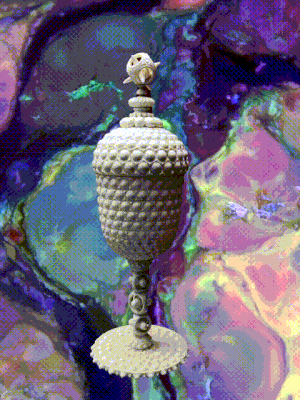NEO[N] MARY
Neo[n] Mary setzt sich mit der Repräsentation der Frau in der sakralen Kunst auseinander. Das Christentum ist, wie die meisten Religionen der Gegenwart, weitgehend androzentrisch geprägt und hat darüber hinaus die männliche Dominanz in der Gesellschaft religiös legitimiert. Über die Jahrhunderte wurden starke Frauenfiguren systematisch aus der Bibel gestrichen. Mögliche Identifikationsfiguren beschränken sich auf die heilige, unbefleckte, folg- und schweigsame Maria, die Mutter Gottes oder die böse, sündige Eva, die den „unschuldigen Mann“ verführte und so die Verbannung aus dem ewigen Paradies provozierte. Die Misogynie der Bibel findet vor allem in der Kunst ihren Ausdruck. Maria wird stark auf ihre Mutterrolle reduziert und meist in einer zurückhaltenden devoten Körperhaltung präsentiert, den Blick zur Seite oder zu Boden gerichtet – passiv. Diese Bilder haben sich in unserem kollektiven Gedächtnis manifestiert und werden kaum hinterfragt. Neo[n] Mary transformiert die mittelalterlichen Glasgemälde des Kunstgewerbemuseums in die Gegenwart und löst sie vom Bild der devoten und fügigen Frau. Die Lichtobjekte aus geschichteten Acrylglaselementen zeigen Maria in einer starken und autonomen Rolle – eine laute und poppige Antwort auf Jahrhunderte der Unterdrückung, des Schweigens und stillen Betens.
Neo[n] Mary deals with the representation of women in the sacral art. Like most of the present religions, Christianity is mainly men centred and has religiously legitimized male dominance in society. Over the centuries, strong female figures have been erased systematically from the Bible. Possible identification figures are limited to the holy, immaculate, obedient, and silent Mary, the mother of God, or the evil, sinful Eve, who seduced the “innocent man” and thus provoked banishment from eternal paradise. The misogyny of the Bible finds expression above all in art. Mary is strongly reduced to her role as a mother and is usually presented in a reserved submissive posture, her gaze turned to the side or to the ground – passive. These images have manifested themselves in our collective memory and are hardly questioned. Neo[n] Mary transforms the medieval glass paintings of the Kunstgewerbemuseum Berlin to the present, detaching them from the image of the submissive and compliant woman. The light objects made of layered acrylic glass elements show Mary in a strong and autonomous role – a loud and poppy response to centuries of oppression, silence, and silent prayer.
Prozess
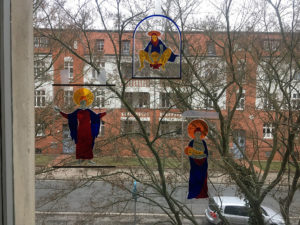

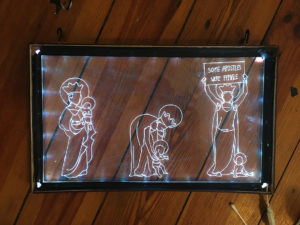
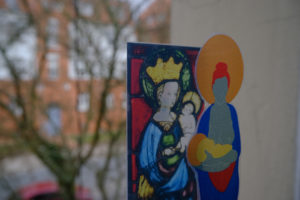
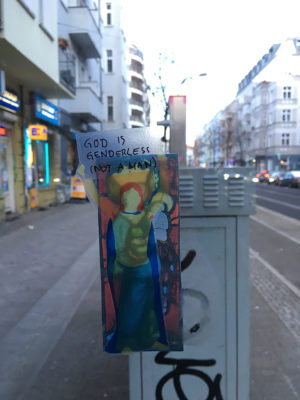
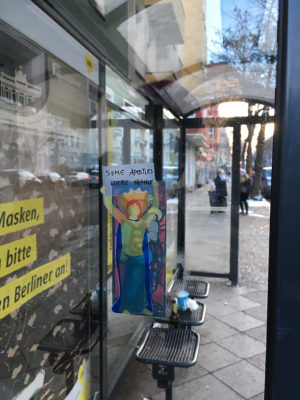
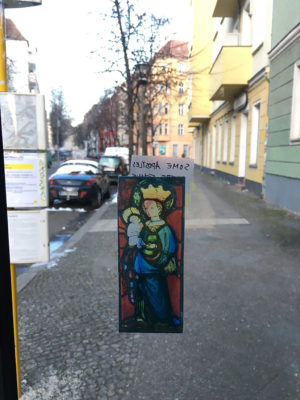
![NEO[N]MARY_Windrich_Anna-Lena_Final_Web_1](https://design.udk-berlin.de/wp-content/uploads/2021/03/NEONMARY_Windrich_Anna-Lena_Final_Web_1.jpg)
![NEO[N]MARY_Windrich_Anna-Lena_Final_Web_2](https://design.udk-berlin.de/wp-content/uploads/2021/03/NEONMARY_Windrich_Anna-Lena_Final_Web_2.jpg)
![NEO[N]MARY_Windrich_Anna-Lena_Final_Web_3](https://design.udk-berlin.de/wp-content/uploads/2021/03/NEONMARY_Windrich_Anna-Lena_Final_Web_3-.jpg)
![NEO[N]MARY_Windrich_Anna-Lena_Final_Web_4](https://design.udk-berlin.de/wp-content/uploads/2021/03/NEONMARY_Windrich_Anna-Lena_Final_Web_4.jpg)
![NEO[N]MARY_Windrich_Anna-Lena_Final_Web_6](https://design.udk-berlin.de/wp-content/uploads/2021/03/NEONMARY_Windrich_Anna-Lena_Final_Web_6.jpg)
![NEO[N]MARY_Windrich_Anna-Lena_Final_Web_7](https://design.udk-berlin.de/wp-content/uploads/2021/03/NEONMARY_Windrich_Anna-Lena_Final_Web_7.jpg)
![NEO[N]MARY_Windrich_Anna-Lena_Final_Web_8](https://design.udk-berlin.de/wp-content/uploads/2021/03/NEONMARY_Windrich_Anna-Lena_Final_Web_8.jpg)
![NEO[N]MARY_Windrich_Anna-Lena_Final_Web_9](https://design.udk-berlin.de/wp-content/uploads/2021/03/NEONMARY_Windrich_Anna-Lena_Final_Web_9.jpg)
![NEO[N]MARY_Windrich_Anna-Lena_Final_Web_5](https://design.udk-berlin.de/wp-content/uploads/2021/03/NEONMARY_Windrich_Anna-Lena_Final_Web_5-scaled.jpg)
![NEO[N]MARY_Windrich_Anna-Lena_Final_Web_10](https://design.udk-berlin.de/wp-content/uploads/2021/03/NEONMARY_Windrich_Anna-Lena_Final_Web_10.jpg)
